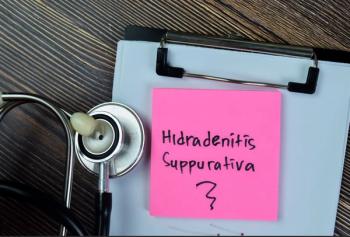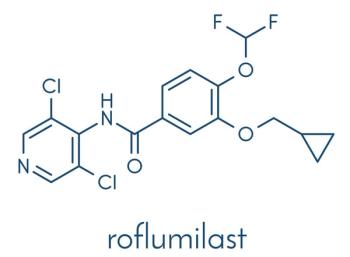
Erythema Multiforme Minor
Erythromycin had been prescribed for a 15-year-old boy who complained of flulike symptoms. Twenty-four hours after starting the medication, he awakened with painful ulceration of his mouth and lips. The erythromycin was discontinued, and hydroxyzine (25 mg, three times daily) was started for possible macrolide sensitivity. His condition worsened over the next 3 days, however, and he was hospitalized when the severe oral pain made it impossible for him to tolerate food or drink. At no point had he any nausea, vomiting, diarrhea, fever, or chills.
Erythromycin had been prescribed for a 15-year-old boy who complained of flulike symptoms. Twenty-four hours after starting the medication, he awakened with painful ulceration of his mouth and lips. The erythromycin was discontinued, and hydroxyzine (25 mg, three times daily) was started for possible macrolide sensitivity. His condition worsened over the next 3 days, however, and he was hospitalized when the severe oral pain made it impossible for him to tolerate food or drink. At no point had he any nausea, vomiting, diarrhea, fever, or chills.
The patient had had chickenpox in early childhood. He had no known drug allergies and no history of illicit drug or alcohol abuse. At admission, his temperature was 38.3°C (100.9°F), pulse was 84 beats per minute, and blood pressure was 111/59 mm Hg. His upper and lower lips were intensely red, swollen, and covered with several draining, vesicular lesions (A). Whitish plaques covered his entire tongue (which was also bright red) and buccal cavity (B). Small scattered vesicles and maculopapules on the patient's arms (C) and the backs of his hands were tense with clear fluid, but there was no obvious drainage. Some mildly tender anterior and posterior cervical adenopathy was noted.
Results of a complete blood cell count and of renal and liver function tests were normal. Herpes simplex type 1 viral titers were obtained; the IgG titer was positive at 0.95 g/L (normal, ≤ 0.24 g/L), and the IgM titer was positive at 0.77 g/L (normal, ≤ 0.22 g/L). His other immunoglobulin levels were normal, and test results were negative for cold agglutination, influenza A, and HIV infection.
Drs Osman I. Ahmed and Tracey Ann Thomas-Doyle of Gainesville, Fla, diagnosed the condition as erythema multiforme minor with some criteria of erythema multiforme major (the prodrome, the abrupt outbreak of lesions, and white pseudomembrane) secondary to herpes simplex type 1 viral infection. The patient was given acyclovir IV, 500 mg every 8 hours, and viscous lidocaine for pain relief. He became afebrile after 5 days of treatment, and his oral intake improved. He made a complete recovery without scarring.
Newsletter
Enhance your clinical practice with the Patient Care newsletter, offering the latest evidence-based guidelines, diagnostic insights, and treatment strategies for primary care physicians.
























































































































































































































































































